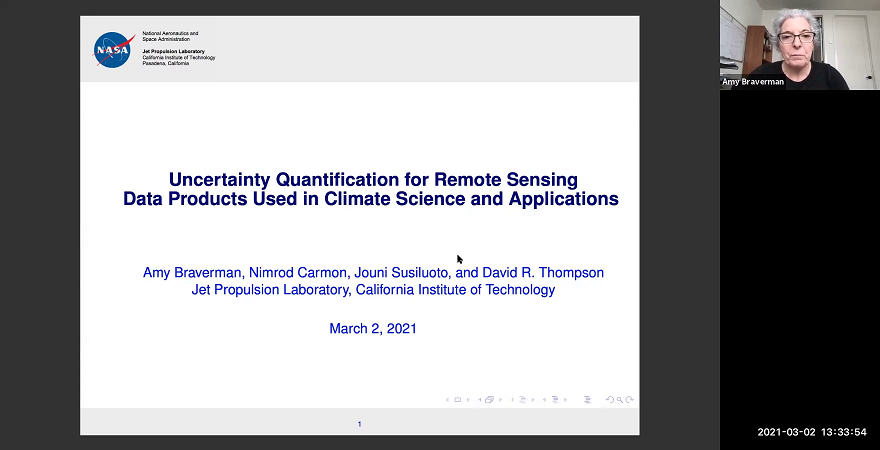Uncertainty Quantification for Remote Sensing Data Products used in Climate Science and Applications
Presenters
March 2, 2021
Event: Confronting Climate Change
Abstract
Remote sensing data sets produced by NASA and other space agencies are a vast resource for the study of climate change and the physical processes which drive it. However, no remote sensing instrument actually observes these processes directly; the instruments collect electromagnetic spectra aggregated over two-dimensional ground footprints or three dimensional voxels, or sometimes just at a single point location. Inference on physical state based on these spectra occurs via a complex ground data processing infrastructure featuring a retrieval algorithm (so named because it retrieves latent true states from specta) which typically provides point estimates and sometimes accompanying uncertainties. The method and the rigor by which uncertainties are derived varies by mission, and a key challenge is keeping up with the volume of data that needs to be processed. In this talk I will use a new upcoming mission that is currently in the planning stages as a vehicle to explain both traditional and newer approaches to uncertainty quantification (UQ) for remote sensing data products. I hope that delving into some of the details will provide a better understanding of the strengths and weaknesses of remote sensing data for climate change research.
